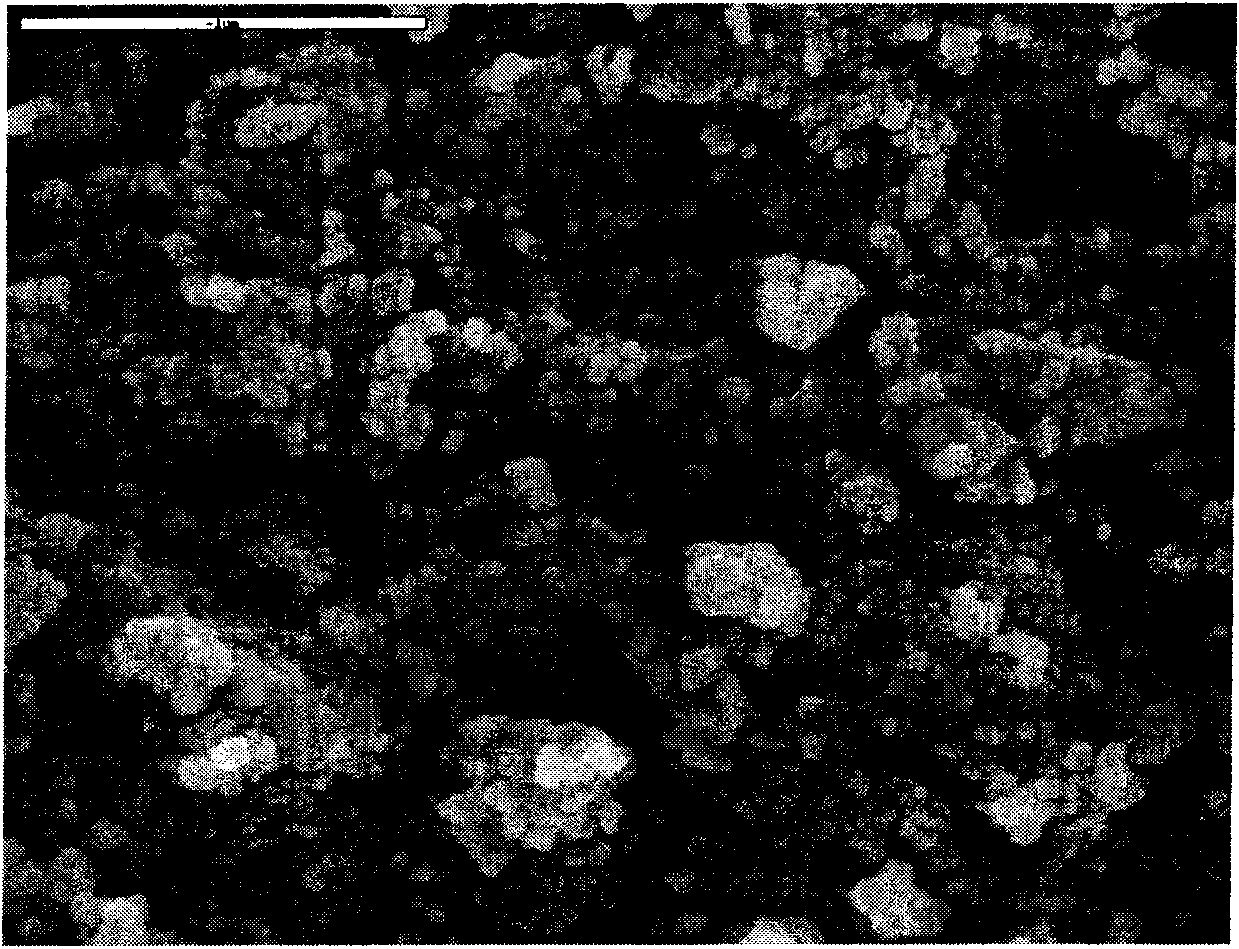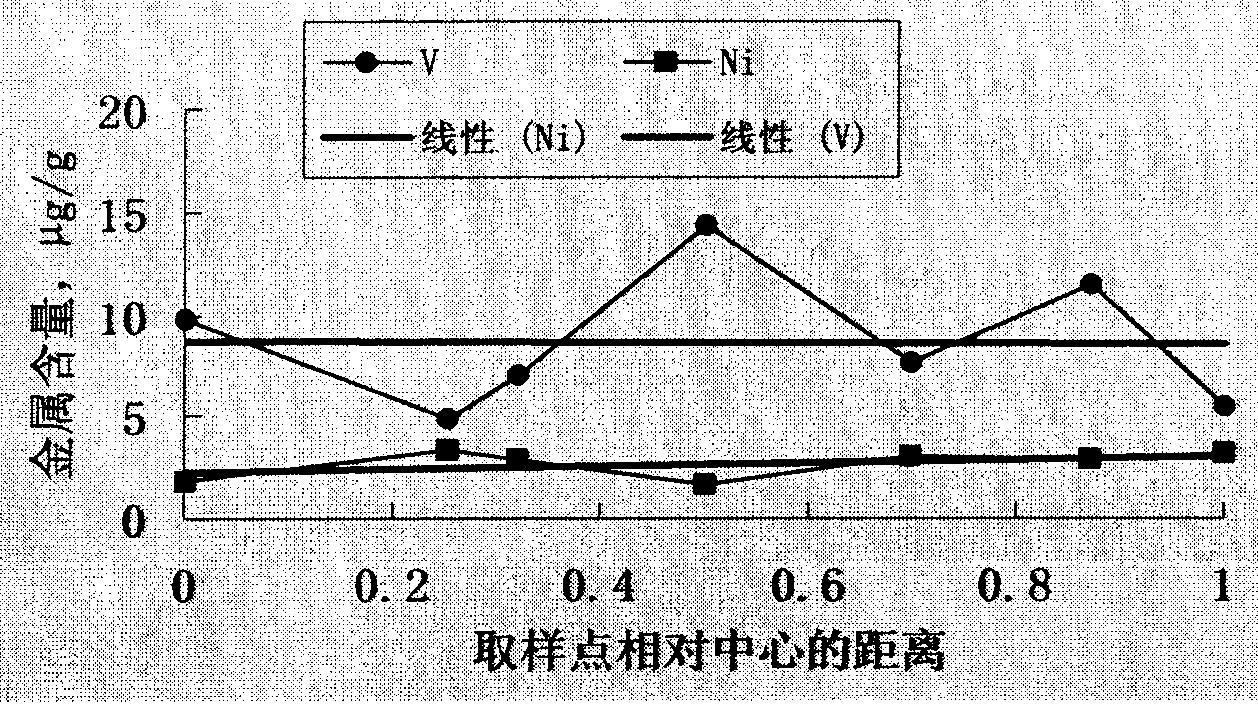Hydrogenation catalyst and application thereof in residue fixed-bed hydrogenation method
A hydrogenation catalyst, catalyst bed technology, applied in catalyst carrier, chemical instrument and method, metal/metal oxide/metal hydroxide catalyst, etc., can solve unfavorable residue demetallization reaction, small asphaltene micelle and other problems, to achieve the effect of prolonging the operation period, increasing the deposition amount, and improving the penetration of the pores.
- Summary
- Abstract
- Description
- Claims
- Application Information
AI Technical Summary
Problems solved by technology
Method used
Image
Examples
Embodiment 1
[0065] Under stirring conditions, 375g of aluminum nitrate nonahydrate and 90g of urea were mixed and heated to 100°C, and added to a mixture of 32g of polyisobutylene maleate triethanolamine maleate and 88g of 150HVI neutral oil at the same temperature to form supersolubilizing micelles , and then reacted at 100°C for 3 hours to obtain nano-aluminum hydroxide gel. Wash three times with 200ml of distilled water, and dry at 120°C for 10 hours. Mix 70g of nano-aluminum hydroxide gel dry powder with 30g of binder pseudo-boehmite, mix 1.6g of dilute nitric acid (mass concentration 17%), 160g of water and 10g of cosolvent, and then add it to the nano-hydroxide The aluminum gel is dried in the mixture of powder and binder, and then molded in the extruder, and the pressure is controlled at 10MPa. The molded product was dried at 100°C for 10 hours, calcined at 240°C for 3 hours, and calcined at 850°C for 4 hours, wherein the heating rate was 5°C / min to obtain the alumina carrier A1 o...
Embodiment 2
[0068] The hydrogenation catalyst HDM-1 was used in the hydrogenation demetallization experiment of residual oil raw materials. The properties of the residual oil: nickel content 21.06μg / g, vanadium content 67.67μg / g. The test conditions are as follows: reaction temperature 390°C, hydrogen to oil volume ratio 1000, liquid hourly volume space velocity 1.0h -1 , hydrogen partial pressure 15.4MPa, continuous operation for 3000 hours, the pore properties of the catalyst after operation are shown in Table 1. Investigate the diffusion and metal distribution of metal precipitation in the catalyst pores in residual oil, and use JSM-7500F cold field emission scanning electron microscope (FESEM) to measure the metal distribution, cross-cut the catalyst along half of the longitudinal direction, and then measure along the long axis direction of the cross-section of the catalyst. metal distribution, see image 3 , where the abscissa is the distance from the sampling point to the center, w...
Embodiment 3
[0075] Mix 90g minus three-line dewaxed oil and 70g SP-80, heat to dissolve at 80°C, and mix well; heat 620g of aluminum nitrate nonahydrate to 80°C to melt, slowly add to the above mixture, and mix for 20 minutes to form a uniform supersolubilized colloid. 220 g of saturated ammonia water at 20° C. was added dropwise and aged for 3 hours to obtain a nano-aluminum hydroxide gel. Wash three times with 200ml of distilled water, and dry at 120°C for 10 hours. Mix 80g of nano-aluminum hydroxide gel dry powder with binder pseudo-boehmite 20g; 3.2g dilute nitric acid (mass concentration 17%), 15g water and 3g cosolvent ethanol are mixed uniformly, and then in the extruder Molding in middle, control pressure at 23MPa. The molded product was dried at 100°C for 10 hours, calcined at 240°C for 3 hours, and then calcined at 850°C for 4 hours with a heating rate of 5°C / min to obtain the alumina carrier A2 of the present invention.
[0076] The obtained alumina carrier A2 is impregnated ...
PUM
| Property | Measurement | Unit |
|---|---|---|
| Diameter | aaaaa | aaaaa |
| Porosity | aaaaa | aaaaa |
Abstract
Description
Claims
Application Information
 Login to View More
Login to View More - R&D
- Intellectual Property
- Life Sciences
- Materials
- Tech Scout
- Unparalleled Data Quality
- Higher Quality Content
- 60% Fewer Hallucinations
Browse by: Latest US Patents, China's latest patents, Technical Efficacy Thesaurus, Application Domain, Technology Topic, Popular Technical Reports.
© 2025 PatSnap. All rights reserved.Legal|Privacy policy|Modern Slavery Act Transparency Statement|Sitemap|About US| Contact US: help@patsnap.com



